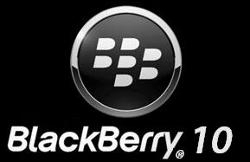BlackBerry 10
Updated: 08/02/2020 by Computer Hope

BlackBerry 10 is an operating system developed by BlackBerry for use on its BlackBerry mobile phones. It is based on the QNX operating system that BlackBerry purchased in 2009 for the purpose of building their new mobile software from the ground up. The first version, BlackBerry 10.0, was released in January 2013.
BlackBerry 10's features
- Gesture recognition - includes four pre-programmed gestures for navigating menus and apps.
- Multitasking - allows multiple apps to run concurrently. The active app can be switched with gestures, and inactive apps are optimized to run in a special background mode which conserves the phone's battery.
- BlackBerry Hub - a notification center which gives the user an overview of new e-mails, text messages, voicemails, and social media updates.
- BlackBerry Balance - a software feature that allows the user to completely segregate personal and work data. Balance can interface with BlackBerry Enterprise Service 10, allowing corporate IT (information technology) departments to install and update software on a user's phone without overwriting personal settings and data.
- Time Shift Camera - the phone's digital camera that takes multiple shots of every photograph to fix common photo issues, such as closed eyes, red eye, or unintended motion blur.
- BBM Video Screen Share - integrates video chat and VoIP (Voice over Internet Protocol) calling into BlackBerry's BBM (BlackBerry Messenger) messaging service.
- Android Layer - allows users to install and run Android applications.
- Virtual Keyboard - replaces the traditional physical BlackBerry keyboard.
- Voice Control - allows the user to issue voice commands to the phone's applications.
- BlackBerry Assistant - an enhanced version of Voice Control, available for BlackBerry 10.3 and later.
- BlackBerry Blend - allows seamless integration of mobile phone apps and BlackBerry applications on the user's computer.
